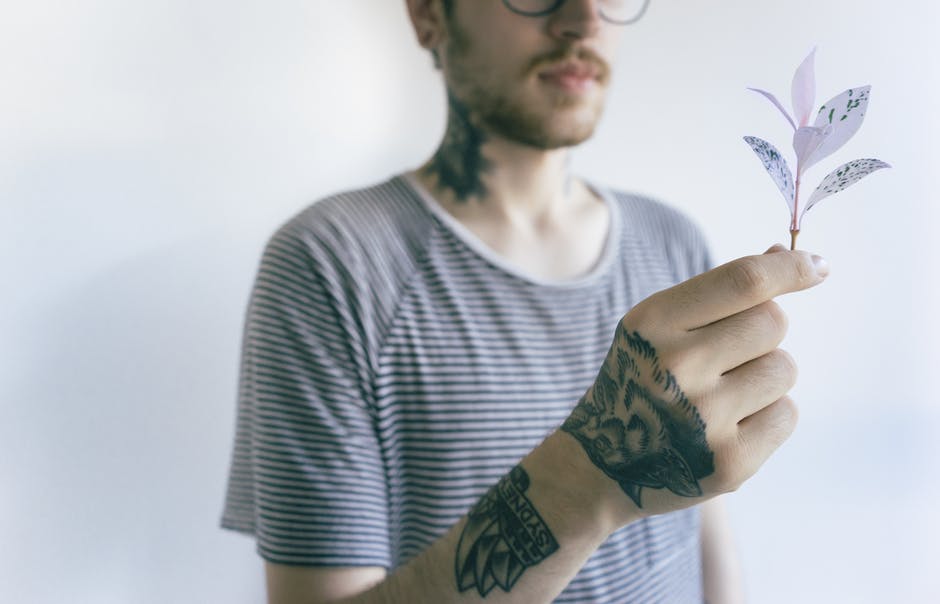Late last year, I went to Amsterdam and got my first tattoo.
Sorry, scratch that. Late last year, my parents went to Amsterdam and got their first tattoos.
Trust me, I was just as surprised as you probably are.
All through my childhood, since I could conceptualise ‘rebellion’ and correlate actions with that idea, I said I would get a tattoo. It would be something meaningful, like an acorn – symbolising future strength, or a Celtic knot – in some attempt to prove that my family history was interesting. So, whenever body art was mentioned in the household, I’d take up the mantle of the sole mouthpiece for my generation – as only children are wont to do – and preached of a world full of colourful, accepting people. My mother and father, a Baby Boomer and Gen X-er respectively, just laughed and said I should be a lawyer. And maybe I should have been – I flatter myself in thinking that perhaps my tirades convinced them to get inked.
It probably wasn’t my influence at all, but a newfound respect for the artistry and the thrill of a previously taboo experience – after all, they grew up believing that tattoos were the marks of criminals and eventual regret. To go from such an instinctive revulsion to actively seeking it out was quite the paradigm shift, something they’ve had to become adept at lately; stripping away the ideals they were raised with in order to keep pace with a modern world full of contradictions. The true blue husband they always planned for me turned out to be a girl from rural England. The stable job they envisioned for my career became a Bachelor of Arts with shaky prospects. So I really shouldn’t have been surprised: with all the changes they’ve had to face with me, is it any wonder they thought differently about other global oddities?
According to NBC News, the average American millennial has between two and five tattoos. Here in Australia, a recent study by McCrindle says that 30 per cent of young people have been inked and interestingly, 20 per cent of older people with tattoos got theirs after the age of 30. Women are more likely than men to go under the needle: while one fifth of the total population have tatts, a quarter of all women have them. That’s over five million women in this country alone shelling out an average of $100 per tattoo. Considering that only a few generations ago the art was linked to promiscuity and moral deviation, it’s incredible how popular it has become. Within fifty years, tattoos have gone from the sloppy pin-ups on sailors’ biceps to the chic minimalist geometrics on your favourite barista’s wrist.
Of course, this evolution has been a long time coming. Tattoos have been a part of human history for thousands of years; allegedly since 12,000 BCE. Theories about the origin of the word itself are numerous, but the common consensus is that came from the Tahitian word for marking, ‘tatau’. Through time and culture, the use and meaning of tattoos has evolved from skill identification in Borneo to indicating social status in the Roman Empire to expressions of family allegiance for the Saxons.
The push against this ancient practice arrived in Europe with the Norman Conquest, and in subsequent centuries the art fell out of popularity in the West. Tattooing came back into fashion with colonisation, as the public were enthralled with the ‘paintings’ adorning the Polynesian people who were brought to Britain by Captain Cook. Over time the association between tattoos and the ‘primitive’ became an unsaid social narrative, leading to the negative perception that was, until recently, widely espoused.
The rise of tattoo culture in the West has no definite genesis, but is rather a culmination of factors: post-war anti-authoritarian sentiments, a growing interest in ‘adopting’ another’s culture to make up for the perceived failings in one’s own, globalisation lending itself to a wider worldview and the creation of the modern celebrity and the desire to emulate them.
What we do know is that for better or worse, tattoos are once again a part of mainstream culture, and that my parents got inked before I did. In Amsterdam, of all places. Damn it, how am I supposed to rebel now? Streak through Coombs?!

We acknowledge the Ngunnawal and Ngambri people, who are the Traditional Custodians of the land on which Woroni, Woroni Radio and Woroni TV are created, edited, published, printed and distributed. We pay our respects to Elders past and present. We acknowledge that the name Woroni was taken from the Wadi Wadi Nation without permission, and we are striving to do better for future reconciliation.
